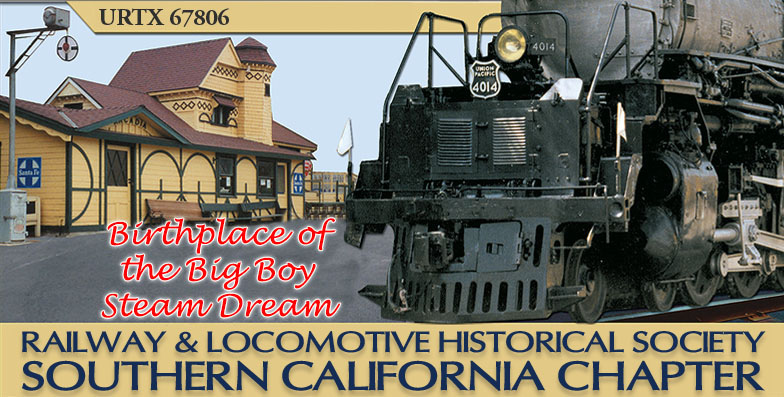Ice Cooled Refrigerator Car URTX 67806
A Brief History Of This Car
The Union Refrigerator Transit Line operated this car which was built by the General American Transportation Corporation in in 1950. The car carried the CMStP&P herald (Chicago, Milwaukee, St. Paul and Pacific Railroad) until 1962 when the car was reclassed as "RSM" with meat rails and a large sliding door replaced the original hinged doors. The car received a new yellow paint job and a large "OSCAR MAYER" logo. A year later the car was repainted the Hiawatha Orange, numbered URTX 67806 and assigned to the "CUDAHY" Packing Company. Its final service was to the "SWIFT" Company and was donated to the Chapter in 1991.
Keeping It Cool On The Rails
A refrigerator car (or “reefer”) is a refrigerated boxcar (US) or van (UIC), a piece of railroad rolling stock designed to carry perishable freight at specific temperatures. Refrigerator cars differ from simple insulated boxcars and ventilated boxcars (commonly used for transporting fruit), neither of which are fitted with cooling apparatus. Reefers can be ice-cooled, come equipped with any one of a variety of mechanical refrigeration systems, or utilize carbon dioxide (either as dry ice, or in liquid form) as a cooling agent. Milk cars (and other types of “express” reefers) may or may not include a cooling system, but are equipped with high-speed trucks and other modifications that allow them to travel with passenger trains.
After the end of the American Civil War, Chicago, Illinois emerged as a major railway center for the distribution of livestock raised on the Great Plains to Eastern markets. Getting the animals to market required herds to be driven up to 1,200 miles (2,000 km) to railheads in Kansas City, Missouri, where they were loaded into specialized stock cars and transported live (“on-the-hoof”) to regional processing centers. Driving cattle across the plains also caused tremendous weight loss, with some animals dying in transit.

Meat packer Gustavus Swift sought a way to ship dressed meats from his Chicago packing plant to eastern markets. In 1878, Swift hired engineer Andrew Chase to design a ventilated car that was well-insulated, and positioned the ice in a compartment at the top of the car, allowing the chilled air to flow naturally downward. The meat was packed tightly at the bottom of the car to keep the center of gravity low and to prevent the cargo from shifting. Chase’s design proved to be a practical solution to providing temperature-controlled carriage of dressed meats, and allowed Swift & Company to ship their products all over the United States, and even internationally, and in doing so radically altered the meat business.
Today’s Reefer applications can be divided into five broad groups:
- dairy and poultry producers require refrigeration and special interior racks;
- fruit and vegetable reefers tend to see seasonal use, and are generally used for long-distance shipping (for some shipments, only ventilation is necessary to remove the heat created by the ripening process);
- manufactured foods (such as canned goods and candy) as well as beer and wine do not require refrigeration, but do need the protection of an insulated car;
- meat reefers come equipped with specialized beef rails for handling sides of meat, and brine-tank refrigeration to provide lower temperatures (most of these units are either owned or leased by meat packing firms); and
- fish and seafoods are transported, packed in wooden or foam polystyrene box with crushed ice, and ice bunkers are not used generally.




